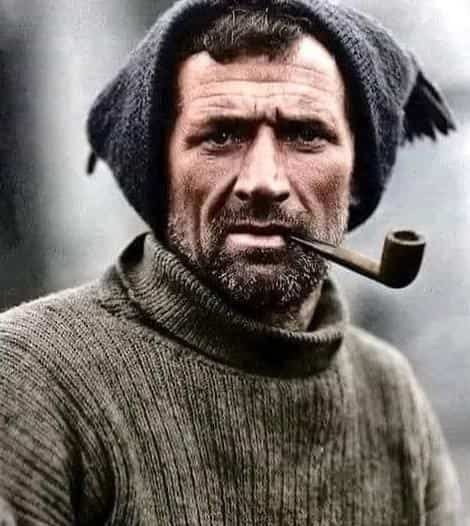
Thomas Crean, an Irish seaman and polar explorer, remains one of the most remarkable yet unsung figures in the history of Antarctic exploration. Born on July 20, 1877, in Annascaul, County Kerry, Ireland, Crean’s life was defined by his courage, resilience, and unwavering commitment to his comrades. Despite playing a crucial role in three of the most famous Antarctic expeditions of the early 20th century, Crean’s name is often overshadowed by the more celebrated figures of his time, such as Robert Falcon Scott and Ernest Shackleton. This article delves into the life and legacy of Thomas Crean, highlighting his extraordinary contributions to the heroic age of Antarctic exploration.
Early Life and Naval Career
Thomas Crean was born into a large farming family as the sixth of ten children. In 1893, at the age of 16, Crean joined the Royal Navy, marking the beginning of a lifelong connection to the sea. His naval career took him around the world, and his strong work ethic and reliability quickly earned him a reputation as a dependable sailor. Crean’s naval background and experience would later prove invaluable during his Antarctic adventures.
Antarctic Exploration: The Discovery Expedition (1901-1904)
Crean’s first taste of Antarctic exploration came when he joined Captain Robert Falcon Scott’s Discovery Expedition in 1901. Initially, he was not part of the original crew; Crean joined the expedition after a seaman was dismissed due to misconduct. Despite being a late addition, Crean’s resilience and hardworking nature quickly earned him the respect of his peers.
During the expedition, Crean faced the harsh and unforgiving conditions of the Antarctic with remarkable fortitude. The crew encountered numerous challenges, including extreme cold, blizzards, and the constant threat of starvation. Crean’s experience and positive attitude helped the team endure these conditions, setting the stage for his continued involvement in polar exploration.
The Terra Nova Expedition (1910-1913): A Test of Endurance
Thomas Crean’s most notable contribution to Antarctic exploration came during Scott’s ill-fated Terra Nova Expedition. Crean served as a Petty Officer and was integral to the mission, demonstrating exceptional bravery and strength.
One of the most harrowing moments of Crean’s life occurred in 1912 when he embarked on a desperate solo march to save the lives of his companions. After being ordered to turn back from Scott’s final push to the South Pole, Crean was part of the support party that accompanied Edward Evans, William Lashly, and himself back to base camp. When Evans fell severely ill and could no longer walk, Crean volunteered to trek alone over 35 miles across treacherous ice and snow to get help. Battling fatigue, hunger, and the brutal Antarctic environment, Crean completed the journey in 18 hours, saving Evans’s life in the process. His heroic solo march remains one of the most extraordinary feats of survival and endurance in polar history.
Despite his bravery, Crean was overlooked for the Polar Medal, a decision that caused controversy and highlighted the often-unrecognized sacrifices made by lower-ranking expedition members.
Shackleton’s Endurance Expedition (1914-1917): Survival Against All Odds
Crean’s final and perhaps most legendary Antarctic expedition was with Sir Ernest Shackleton’s Endurance Expedition. The mission aimed to cross the Antarctic continent but quickly turned into a desperate struggle for survival when their ship, Endurance, became trapped and eventually crushed by pack ice in the Weddell Sea.
Crean was a vital member of Shackleton’s crew, known for his steady demeanor and unbreakable spirit. As the men camped on drifting ice floes and later made their way in lifeboats to Elephant Island, Crean’s unwavering support and seamanship were crucial. His greatest moment came during the perilous 800-mile open-boat journey from Elephant Island to South Georgia, a feat often considered one of the greatest boat journeys ever undertaken. Crean, along with Shackleton and two others, sailed in the small lifeboat, James Caird, through freezing temperatures, towering waves, and relentless storms.
Upon reaching South Georgia, Crean again proved his mettle by participating in the treacherous 36-hour overland trek across the island’s uncharted mountainous terrain to reach a whaling station and organize the rescue of the remaining men. His contribution to this nearly impossible journey was instrumental in ensuring that not a single life was lost.
Life After the Antarctic and Legacy
After the Endurance Expedition, Crean returned to Ireland and settled down in his hometown of Annascaul. He married Ellen Herlihy in 1917, and together they ran a pub named “The South Pole Inn,” a nod to Crean’s Antarctic adventures. Unlike many of his contemporaries, Crean did not seek fame or recognition; instead, he lived a quiet life away from the public eye.
Thomas Crean passed away on July 27, 1938, at the age of 61, after complications from a ruptured appendix. He left behind a legacy of heroism and selflessness that continues to inspire. Crean’s contributions to polar exploration are now more widely recognized, and he is celebrated as a symbol of courage, endurance, and the indomitable human spirit.
Conclusion
Thomas Crean’s story is one of extraordinary bravery and resilience in the face of overwhelming odds. As an unsung hero of the heroic age of Antarctic exploration, Crean played a vital role in some of the most daring and dangerous expeditions ever undertaken. His life serves as a testament to the power of determination and the quiet strength that defines true heroism. Though he never sought the limelight, Thomas Crean’s legacy continues to shine brightly, reminding us of the incredible human capacity for courage and endurance.

